What were the most important events in the 3D printing industry this year? We asked CEO’s, CTO’s, analysts and other additive manufacturing leaders for their perspective.
The responses show the 3D printing industry growing in terms of materials, processes and capabilities. A recurring theme is the wider recognition of additive manufacturing beyond early applications solely for prototyping, as our series focusing on end-use production highlighted earlier this year.
A growing materials palette, and the software necessary to fully reap the benefits of 3D printing is also seen in the answers from the experts surveyed for this article.
Bart Van der Schueren, CTO of Materialise
In 2017, the 3D printing industry achieved a new stage of maturity. One way this manifested itself was in the growth of Metal 3D Printing, which is becoming firmly established as a manufacturing technology. By reducing time, costs and effort through automation in the production process, our new software, Materialise e-Stage for Metal anticipated this growth.

Al Siblani, CEO of EnvisionTEC
In 2017, we believe the most important development in 3D printing was the industry’s first full denture solution, which is another critical step in dentistry’s full evolution to 3D printing. EnvisionTEC’s FDA-approved material for replicating pink gums (E-Denture) and teeth (E-Dent) was an industry first that will pave the way to more affordable, better fitting denture solutions.
While we can’t disclose much of our behind-the-scenes work with customers, we continue to see manufacturers moving quickly toward mass customized production — for medical, consumer and sporting goods — as well as real short-run production with 3D printers. This long-talked-about shift is finally being driven by the availability of high-speed 3D printers and functional new materials that make direct printing of end-use parts that compete with injection molded pieces a reality.
Shane Fox, co-founder and CEO of LINK3D
Some prominent machines hit the market in 2017. For example, HP Jet Fusion, Desktop Metal Studio System & Production System followed by GE Additive’s H1 Binder Jet. These large manufacturing companies are producing their own brand of machines. The market is seeing a boost in confidence in the maturity of AM technology.
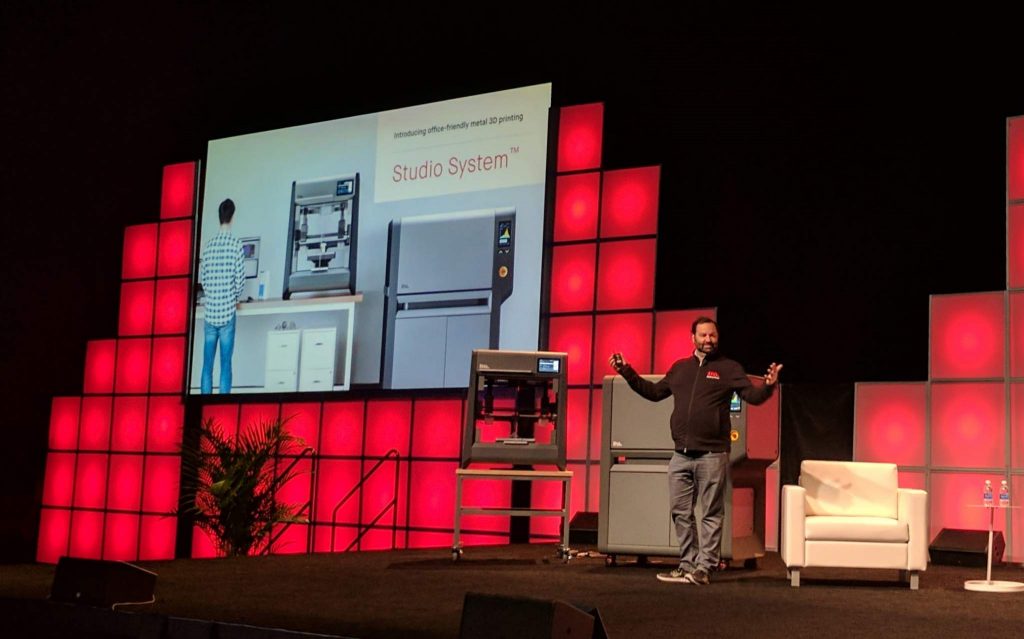
Shon Anderson, CEO of B9Creations
One of the biggest industry shifts in 2017 was the emergence of a middle market between the old definitions of Industrial (priced over $5k) & Desktop (priced under $5k).
As 3D Printing moves mainstream, customers are demanding more capabilities, and a few technology providers are responding.
Amit Dror, CEO of Nano Dimension
The 3D printing industry is maturing very quickly and this year we saw tremendous leaps in the value it delivers to customers as well as the steady acceptance of additive manufacturing for production of components in various industries. Decisions to use 3D printing are usually driven by the need for short time to market, cost reductions and products with complex geometries which are often difficult, expensive and sometimes even impossible to produce with traditional production processes. These challenges create a need for immediate response, agile work processes and customization.
For Nano Dimension, 2017’s major milestone was our launch of the DragonFly2020 Pro 3D Printer and our first commercial sales of the printer. With Nano Dimension’s 3D printer, companies involved in electronics now have a 3D printing solution that allows them to be agile and take control of their development cycles by 3D printing their own Printed Circuit Boards and functional circuits. As our technology continues to prove itself, we will continue to develop products, materials and partnerships that support our customers in the future.
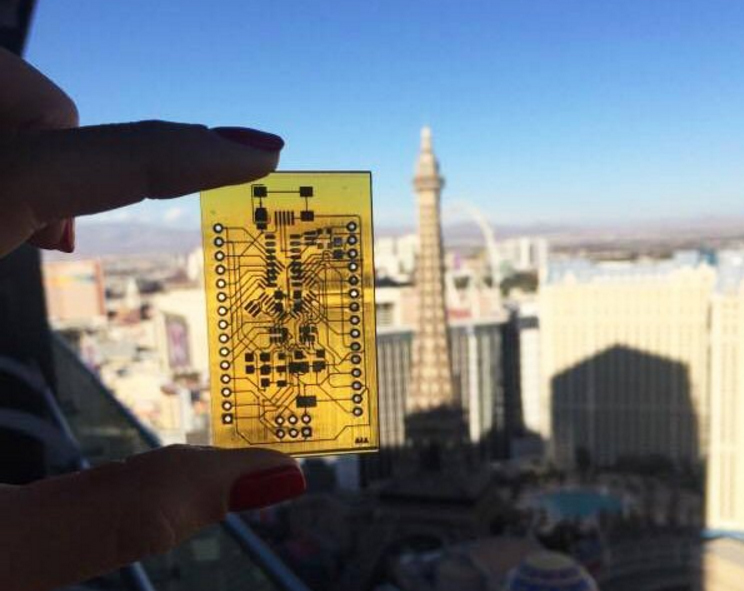
Menno Ellis, SVP Strategy and Vertical Markets, 3D Systems
Metal printing announcements, including more printers… faster printing… larger build sizes… new technologies (e.g., Desktop metal)… lower prices; increased viability as true production solutions while also becoming more accessible to broader segments and applications.
Market entry or formalization of participation in 3D printing by conglomerates. For example, GE, BASF and Kodak.
Continued M&A activity resulting in the combination of key players that enable a more holistic workflow solution and will accelerate 3D printing penetration in applicable sectors. Examples here include GE and GeonX, 3D Systems and NextDent, BASF and Innofil3D, Materialise and ACTech, and Ansys and 3DSim.
A leading indicator is the recent move by Amazon and their Body Labs acquisition. Amazon has a tendency to disrupt when it makes a move… subsequent steps TBD.
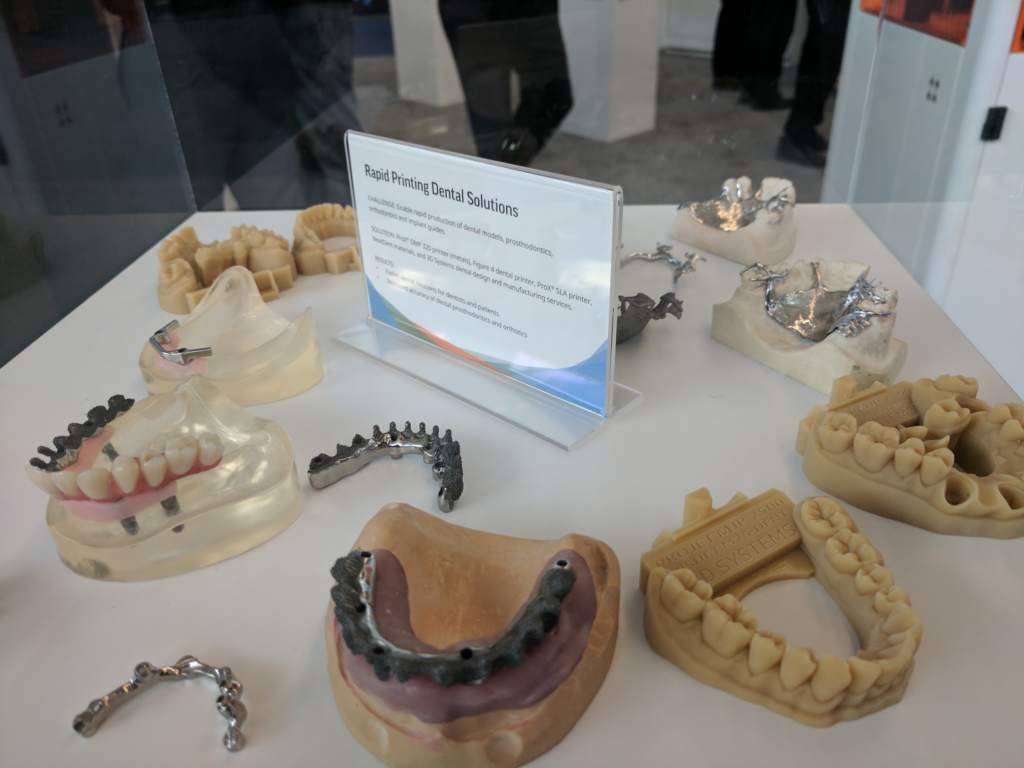
Prof. Wildemann. TCW Transfer-Centrum GmbH & Co.
Industrial 3D printing is now seen as a key technology by mainstream manufacturers.
Andre Wegner, CEO of Authentise
The shift to production became real this year with several significant bureau’s making big waves: Oerlikon, Sintavia, 3DMT, Fast Radius, GKN, and others. These are serious players with the experience and capital necessary to do production the right way. The growth in automotive interest and activity may have helped encourage these players although medical, defence and aviation are still their main target markets.
Clément Moreau, CEO of Sculpteo
3D printing year 2017 has really been the year of software. A lot of different acquisitions, initiatives or launch, among them our Fabpilot manufacturing management software. Regarding 3D printing technologies, we were quite excited that 3D printer manufacturers newcomers succeeded in raising a lot of money and at the same time huge global companies are starting to take biggest shares on the market.
Richard Gaignon, CEO of 3DCeram
For 3Dceram, the most important event has been the release of an hybrid machine which can print simultaneously several materials together. Specifically, ceramic/ceramic or ceramic/metal.
Janis Grinhofs, CEO of Mass Portal
The accelerated and simultaneous entry of chemical enterprises into performance 3D printing materials for the desktop, enabling end-use applications. Essentially, every open materials 3D printer out there suddenly got much more capable and credible in the eyes of multiple production verticals.
Andy Kalambi, CEO of Rize
2017 saw a major breakthrough in industrial 3D printing technology with the advent of the world’s first hybrid 3D printer – Rize One, which combines FDM and Piezo inkjet printing into a single process called APD (Augmented Polymer Deposition). This breakthrough now enables 3D printing to deliver fully isotropic strength parts, minimize post-processing and enables color printing on an FDM part. It expands the footprint of 3D printing to more functional applications and users in diverse industries from consumer, medical to electronics and defense.

Michele Marchesan, New Kinpo Group (XYZPrinting), Senior Vice President Industry 4.0
In my opinion, the most important development for 3D printing in 2017 was the introduction of systems with a more affordable price. This includes both 3D Printers and materials.
Gary Taylor, Regional Manager UK&I at EOS
Over the past 12 months it has been encouraging to see 3D printing moving increasingly from prototyping to actual production. The 3D printing hype has begun to settle and it’s now clear which organisations are leading the way in the sector, and the industries which are benefitting most from this technology.
We’ve heard, first hand, from our global and UK customers, including Williams Martini F1, how they’re continuing to innovate using this technology and how they are gaining a competitive advantage placing 3D printing at the heart of what they do – and their manufacturing processes.
As our customers continue to innovate at scale, it’s exciting to see the growing potential of this technology as we continue to strive toward the factories of the future.
Dr. Dirk Simon, Global Business Director BASF 3D Printing Solutions GmbH
BASF strives for the broad industrialization of 3D Printing. We were positively impressed by the initiative “Mobility goes Additive” launched by Deutsche Bahn, the German railway company. This will be a role model for bundling downstream industry interests to enforce higher performance at lower costs.
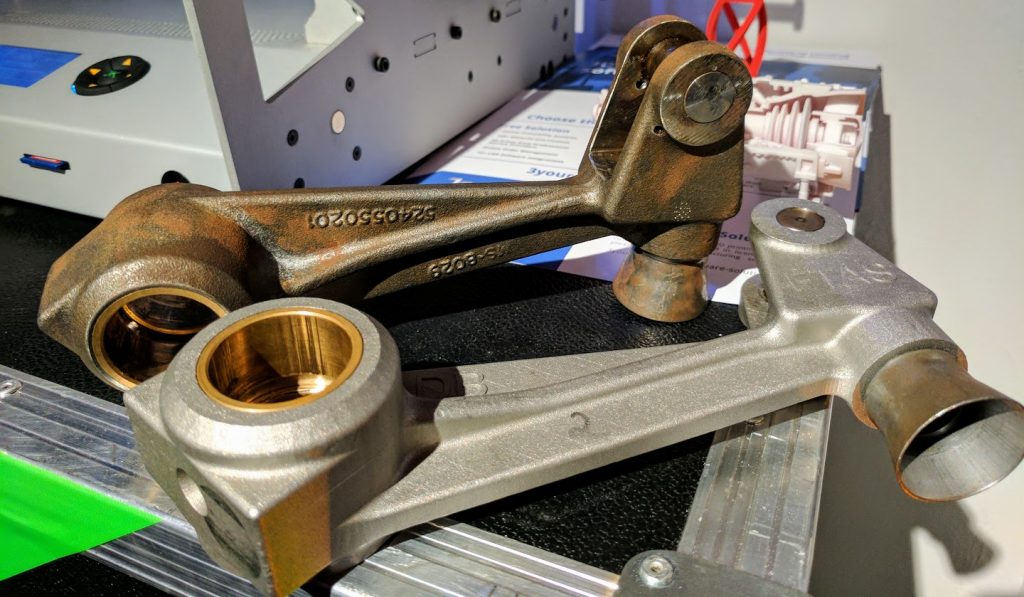
Vishal Singh, co-founder and CTO of LINK3D
There is an increase in awareness on how to adopt and implement additive manufacturing technology to support the digital revolution. Most manufacturing companies in 2017 are evaluating new workflow automation software specialized for the AM process. Industry leaders are looking to streamline and optimize their additive workflow to increase collaboration between design engineers and application engineers, achieve on-demand real-time additive manufacturing while gaining visibility of their cost structure to turn their AM division into a profit center or simply breakeven.
Chris Connery at CONTEXT
While they have not yet become a “consumer” good, desktop 3D printers have continued the unfettered growth in shipments that has been seen since the market began – it is projected to reach +39% by the end of 2017 and to continue into next year. Familiar brands, such as Kodak and Polaroid, will come to market in some regions, but this side of the market will continue to be dominated by companies like Monoprice, XYZprinting, Ultimaker and Formlabs that have a strong presence in 3D printing but are mostly unknown outside the sector.
Jonathan Schwartz, co-founder and Chief Product Officer at Voodoo Manufacturing
I think the announcement of Desktop Metal’s two 3D printers was one of the most exciting things to happen within 3D printing in 2017. It signaled the near-future arrival of viable metal 3D printing (in terms of part quality, cost, and process scalability).
Dr.-Ing. Paul Schüler, Managing Director of CellCore
The acquisition of Concept Laser and Arcam by GE.
Hugo Fromont & Pierre Ayroles, cofounders of Cults
In Moscow, Apis Cor, the Russian manufacturer has 3D printed an entire house in 24 hours only, in extremely cold temperatures. Mercedes-Benz Trucks unveiled its first 3D printed metal spare part to equip trucks.
Also, students from Zurich University created a brand new 6-axis printer: three axes for the print head and three axes for the printing plate.
David McCann, Senior Business Architect at Clariant
The most important thing in 2017 was the shift of some desktop/consumer level printer manufacturers into the industrial printer market and thereby demonstrating the growing competitiveness in the industrial printer market away from existing players.
Michael Sorkin, Head of Europe at Formlabs
In 2017, we saw a clear shift from rapid prototyping to rapid manufacturing. From large businesses to middle-sized and small businesses, our Form 2 customers have been asking us for advanced manufacturing solutions. We met this demand by launching not one but two new solutions in June 2017: For one, we announced Fuse 1, a SLS 3D printer at a new price point, which makes end-products with complex geometries possible. Secondly, with Form Cell, an automation solution for our best-selling SLA 3D printer Form 2, we offer an entirely new way to think about additive manufacturing: In a customized small-scale manufacturing environment for up to 10,000 pieces, automated 3D printing is the way to go.
Accessible and reliable additive manufacturing solutions represent THE definite game-changer for businesses of all sizes in digital fabrication.
Andreas Marcstrom, Manager Additive Engineering, BioProcess Systems, GE Healthcare Life Sciences
The launch of Project A.T.L.A.S. (Additive Technology Large Area System) by GE Additive, aimed at developing the next generation of large additive machines. It utilizes aerospace engineers to build on the technology previously developed by GE and combine it with Concept Laser’s expertise in DMLM (Direct Metal Laser Melting) laser additive machines. The first BETA machine, launched in November 2017, enables 3D printing of metal objects in the meter scale without compromising quality. This increases the number of metal parts that can be 3D printed even more.
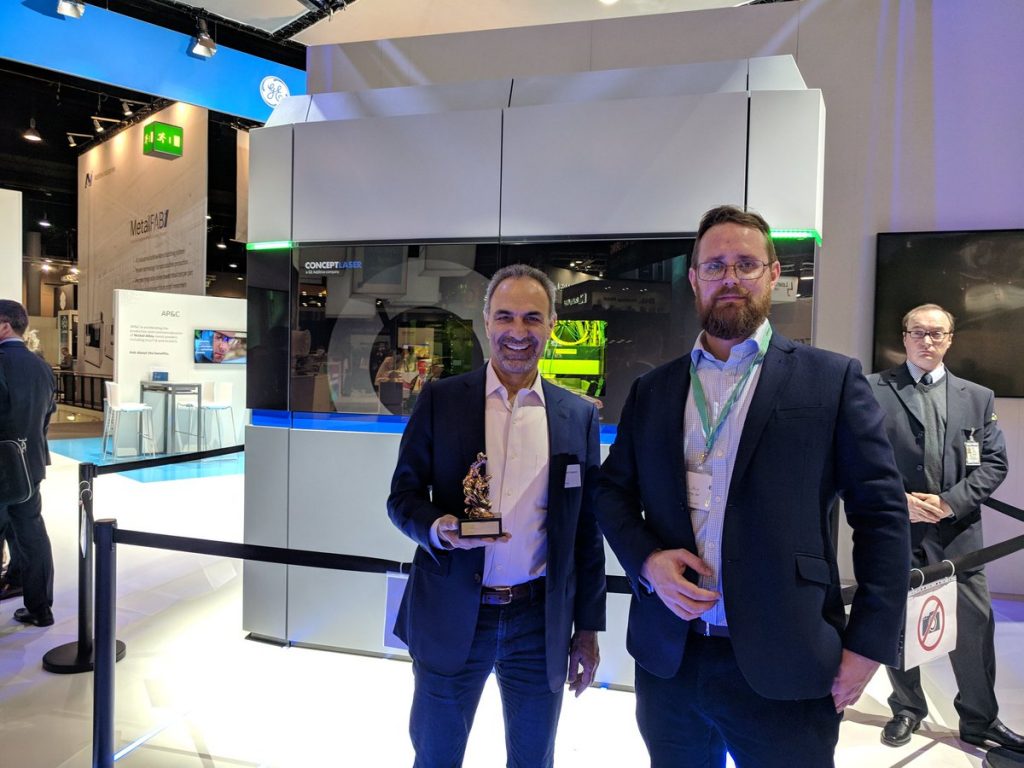
George Fisher-Wilson, Communications Manager at 3D Hubs
The increase in access to low-cost industrial machines and technologies. Through 2017 we’ve seen more money invested in new accessible innovative technologies than ever before, just look at Carbon, Desktop Metal, Markforged, Formlabs or HP. This is an exciting time to be an engineer or designer and have the ability to realise new ideas like never before. This is especially exciting for us at 3D Hubs as the facilitator for accessing these new technologies. As the technologies develop it means we can accelerate their adoption through our platform providing low-cost access with the fastest turnaround times.
3D Printing in 2017
2017 was a big year for 3D printing. At least in terms of larger build volumes, bigger trade shows, wider choices of materials and booming investment.
Without wanting to diminish this, it is also important to note that in the wider context 3D printing has relatively small share of global manufacturing and is one of many technologies competing for the business case. Industry wide initiatives, such as standardisation, and national strategies both have an important role to play in the future of 3D printing.
Bringing together the industry, to the extent that business permits, can be a tide that raises all ships (or 3D Benchys). With this in mind, on behalf of myself and all at 3D Printing Industry, I look forward to continuing to provide a platform for the 3D printing community.
Subscribe to the 3D Printing Industry newsletter, like us Facebook and follow us on Twitter to stay up to date with all the latest news and insight.
Featured image shows our formnext 2017 opening night party hosted by 3YOURMIND, TUV SUD, DyeMansion and 3D Printing Industry. Photo by Michael Petch.


